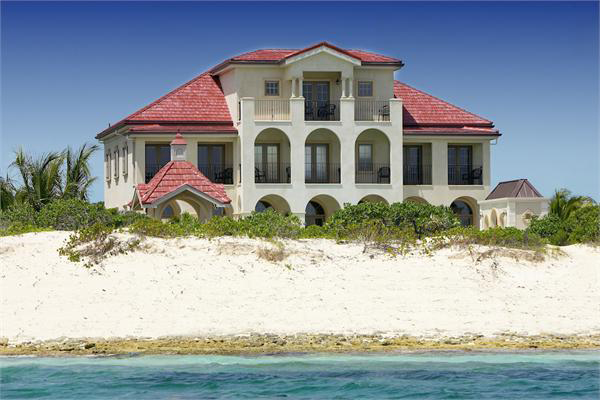President of the Turks and Caicos Islands Real Estate Association, Kathryn Brown, and also of ERA Coralie Properties Ltd. said that the local real market has been showing strong signs of bounding with relatively intense performances in the high-end section and low-end sectors. She said though, that the middle field of the market was still sluggish, as even though sales were being recorded, the exercise was not as robust as with the two other market components. The high-end sector, according to Brown, posted the strongest in sales. The local real estate head said that overall year-to-date figures showed that sales over the period climbed 28 percent, while property prices increased between four and five per cent over the period.
The high-end section of the market comprises properties valued at a million dollars and above; the middle market constitutes properties valuing between four hundred thousand dollars and a million dollars; while the low end of the market encompasses properties that value four hundred thousand dollars and below. Brown said that the market was not only experiencing increase in sales, prices as well.
“It is recovering. But in saying that, we’ve been steadily going down since 2008, and in the last months, we have seen a recovery in not only sales but increase in prices. We see increase in sales in a lot of high-end, and possibly, the low-end is also improving, with locals buying homes because they are able to get mortgages and get loans. “So that has been going quite nicely; sellers and buyers are having more confidence in the market. The whole sector has not improved, though. I would suggest that the higher end and lower end have improved, but the middle sector has not improved as much,” Brown explained.
The high-end properties included hotel condominiums, which saw their sales slumped, as a number of condominium hotels reported sharp drop in sales of their units. Some of those hotels have since been the victims of receivership. Brown owes the recovery of the sector in part to buyers getting more comfortable with the general economy, and with those having disposable cash saw the Turks and Caicos Islands as good place to invest and with tremendous possibly for returns on their investment. “Also, it is a good vacation area that is safe – one of the safest places in the Caribbean. It uses the US dollar and we are still in very early stages of development in a lot of sectors. So the growth is very good potential and the prices are down, and compared to many parts of the world, we are still very inexpensive,” Brown said.
Brown believed that based on the current trend, the Turks and Caicos Islands real estate market could become one of the most robust at least in the region. “We have a very healthy future. The Turks and Caicos has so much to offer; we still have all the assets we’ve always had. We have sun, sand and sea, and are also in close proximity to major cities in North America.
Going forward, we anticipate world-wide flights that are going to come from many parts of the world. And our visibility is still growing; there are still many people in the world that never heard of us. We have a very healthy future, I believe,” Brown said. Joe Zahm, President, Turks & Caicos Sotheby’s International Realty said in the company’s website that Turks & Caicos enjoyed a “strong bounce back year in 2011, after struggling along a murky market bottom in 2009 and 2010”. He said the resurgence was led by the following factors: booming tourism, up about 18%, led by excellent air service; stabling government and local economy; better price value in the market; excellent inventory; drastically increased sales activity in all market sectors and the fact that inventory is down for the first time since 2008.
Zahm said: “The home/villa market nearly tripled in dollar sales volume, and almost doubled in average price, led by the sale of Serendib Villa (which was once owned by developer Richard Padgett and bought by music star Prince) at $10.5M and La Dolce Vita at $6.25M (which was sold by our own Nina Seigenthaler). There was strength throughout this sector as buyers re-emerged and sellers lowered prices to market levels.”
The Turks and Caicos Islands saw its real estate market plummet after a number of banks such as Fannie May, Freddie Mac and Lehman Brothers went bust as a result of the subprime housing market crisis. The Wall Street calamity affected many parts of the world including Caribbean countries such as the Turks and Caicos Islands, and as a result, derailed many projects, which were being financed by the American financial institutions.
Hurricane Ike in August, 2008, also dealt the country another severe body blow, as it tremendously slowed down tourist arrivals. Many visitors that travel to the Turks and Caicos Islands also used their vacation time to scout condominium purchasing opportunities. But because a number of hotels were closed for as long as five months in the aftermath of the hurricane, a slump in the market was created since. The unstable political climate in the country was also said to be factor in the market. *Island and Resort


